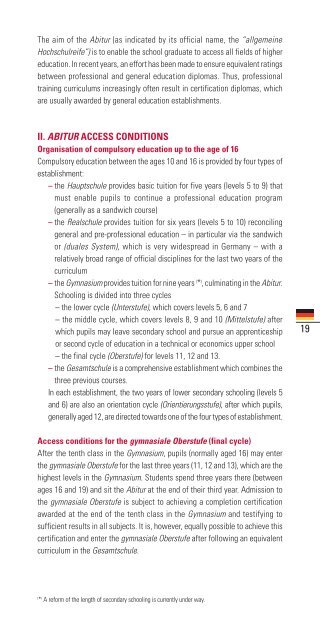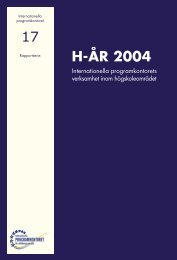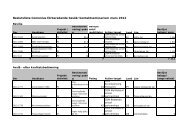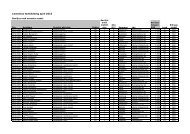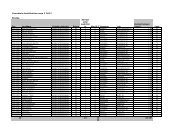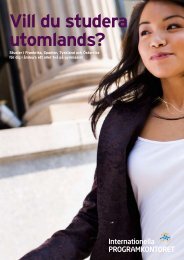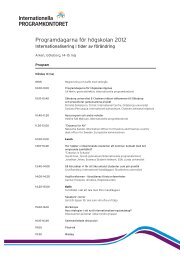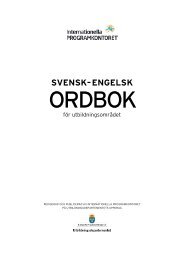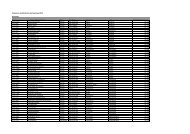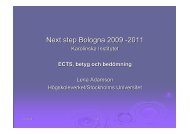Baccalauréat, A-levels, Abitur, Bachillerato
Baccalauréat, A-levels, Abitur, Bachillerato
Baccalauréat, A-levels, Abitur, Bachillerato
Create successful ePaper yourself
Turn your PDF publications into a flip-book with our unique Google optimized e-Paper software.
The aim of the <strong>Abitur</strong> (as indicated by its official name, the “allgemeine<br />
Hochschulreife”) is to enable the school graduate to access all fields of higher<br />
education. In recent years, an effort has been made to ensure equivalent ratings<br />
between professional and general education diplomas. Thus, professional<br />
training curriculums increasingly often result in certification diplomas, which<br />
are usually awarded by general education establishments.<br />
II. ABITUR ACCESS CONDITIONS<br />
Organisation of compulsory education up to the age of 16<br />
Compulsory education between the ages 10 and 16 is provided by four types of<br />
establishment:<br />
– the Hauptschule provides basic tuition for five years (<strong>levels</strong> 5 to 9) that<br />
must enable pupils to continue a professional education program<br />
(generally as a sandwich course)<br />
– the Realschule provides tuition for six years (<strong>levels</strong> 5 to 10) reconciling<br />
general and pre-professional education – in particular via the sandwich<br />
or (duales System), which is very widespread in Germany – with a<br />
relatively broad range of official disciplines for the last two years of the<br />
curriculum<br />
– the Gymnasium provides tuition for nine years ( * ) , culminating in the <strong>Abitur</strong>.<br />
Schooling is divided into three cycles<br />
– the lower cycle (Unterstufe), which covers <strong>levels</strong> 5, 6 and 7<br />
– the middle cycle, which covers <strong>levels</strong> 8, 9 and 10 (Mittelstufe) after<br />
which pupils may leave secondary school and pursue an apprenticeship<br />
or second cycle of education in a technical or economics upper school<br />
– the final cycle (Oberstufe) for <strong>levels</strong> 11, 12 and 13.<br />
– the Gesamtschule is a comprehensive establishment which combines the<br />
three previous courses.<br />
In each establishment, the two years of lower secondary schooling (<strong>levels</strong> 5<br />
and 6) are also an orientation cycle (Orientierungsstufe), after which pupils,<br />
generally aged 12, are directed towards one of the four types of establishment.<br />
19<br />
Access conditions for the gymnasiale Oberstufe (final cycle)<br />
After the tenth class in the Gymnasium, pupils (normally aged 16) may enter<br />
the gymnasiale Oberstufe for the last three years (11, 12 and 13), which are the<br />
highest <strong>levels</strong> in the Gymnasium. Students spend three years there (between<br />
ages 16 and 19) and sit the <strong>Abitur</strong> at the end of their third year. Admission to<br />
the gymnasiale Oberstufe is subject to achieving a completion certification<br />
awarded at the end of the tenth class in the Gymnasium and testifying to<br />
sufficient results in all subjects. It is, however, equally possible to achieve this<br />
certification and enter the gymnasiale Oberstufe after following an equivalent<br />
curriculum in the Gesamtschule.<br />
(<br />
* ) A reform of the length of secondary schooling is currently under way.


